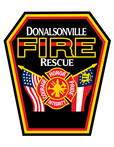Fire & Rescue Training Page
This page is used as a training resource.
Mechanical Advantage Understanding and SkillWatch the video (multiple times if needed) and pratice setting up a 3:1 Mechanical advantage. Create and build this system together as a shift.
0 Comments
Anchor Points & MunterWrap 3 Pull 2 Anchor Point Tensionless Anchor point (great for getting a rescuer down a low angle embankment with a munter) Munter Hitch Munter Explained with more details The Basket Hitch Anchor (You can do this with webbing - MOST COMMON) The Modified Basket Hitch Practice, Practice, Practice. Make use of the cooler air inside and take your ropes inside to practice!
Week 1 & 2: Basic Ropes & Knots (See Below document for the first two weeks of July) Your browser does not support viewing this document. Click here to download the document. This CLUTCH application video covers lowering and hauling with the 11mm CLUTCH. We begin by demonstrating single line methods and progress to Twin Tension Rope Systems (TTRS) is mirrored and nested Double CLUTCH configurations. The CLUTCH is smooth and efficient in anchor-based systems and personal use. It has built-in features for overload protection, intuitive rigging, and mechanical advantage systems.
00:20 - Overview 01:05 - Anchor Systems 01:30 - Twin Tension Lowering 02:58 - Double CLUTCH TTRS 03:20 - Tying Off the CLUTCH 03:49 - Single Line Hauling 05:18 - Hauling TTRS Credit: www.CMCpro.com JUNE 2024 CORE COMPETENCIES Breaking Down the Halligan: A look at Its History and Design Extended Lay Operations - Class coming Force Entry - Swinging Door (out swing) Force Entry - Swinging Door (in swing) Forcible Entry: Through-the-lock Force Entry - Overhead Rolling – Circular Saw MARCH 2024 CORE COMPETENCIES Fire Hydrant Testing Procedures and SOG Review Live Fire Drills Blitz Force Deployment Thermal Imager Use (Videos 1-3) Thermal Imager Use (Videos 4-13) FEBRUARY 2024 CORE COMPETENCIES Single-Firefighter Extension ladder raise (E17) Victim Removal Techniques: Victim Drags Feet First Victim Removal Techniques: Victim Drags Head First Rescue an Conscious/Unconscious Victim Down a Ladder Demonstrate proper packaging of a downed firefighter Demonstrate procedures for overcoming various SCBA emergencies using your SCBA and our buddy breather system. Point of No Return Training When it comes to fireground operations, our team needs to be as prepared as possible. One way of making sure that we are is to train on the basics. Todays post of information to train on revolves around pulling the triple load efficiently. Just grabbing the nozzle and the loop usually causes you to have to flake and manage the hose. Pulling the load with the nozzle and the loop seperated helps to flake it for you without any management afterwards. *Note: This is not a fix all to flaking and managing triple layer pulls, however it does increase eficiency when having to make a straight pull without obstacles. Try this around obstacles and to Charlie side during training drills! A wayMore efficient wayGET SOME!
|
DFR. Archives
July 2024
Categories
All
|
© Copyright 2024-2025 City of Donalsonville Fire Rescue Department
|
Connect with Us |
